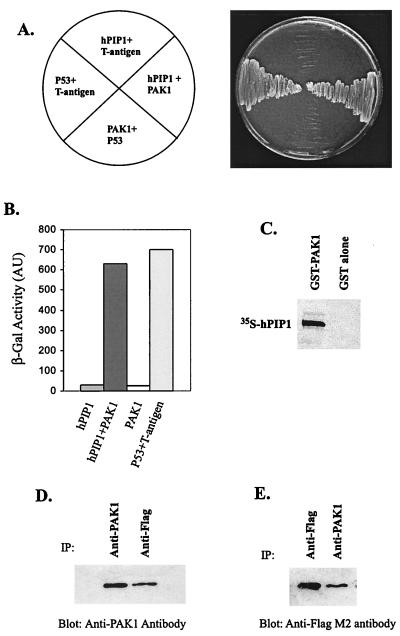Figure 3.
hPIP1 specifically binds to PAK1 in vitro and in vivo. (A) hPIP1 cotransformed with PAK1 or control plasmids, pVA3–1 and pTD1–1, respectively. pVA3–1 and pTD1–1 are positive control plasmids that encode the murine p53 protein and the simian virus 40 large T antigen. Only yeast cells cotransformed with hPIP1 and PAK1 grew on synthetic medium plates deficient in tryptophan, leucine, and histidine. (B) Activation of lacZ reporter gene in yeast cells cotransformed with hPIP1 and PAK1. p53 and large T antigen were used as a positive control in the assays. AU, arbitrary units. (C) Binding of GST-PAK1 with hPIP1 in vitro. (D and E) Coimmunoprecipitation of hPIP1 with PAK1 in mammalian cells. cDNAs encoding PAK1 and hPIP1 were cotransfected into COS-7 cells. The protein complex was immunoprecipitated (IP) by specific antibodies and blotted with anti-PAK1 antibody (D) or anti-FLAG M2 monoclonal antibody (E). Preimmune serum or unspecific immuneserum did not precipitate the two proteins in the assays.

